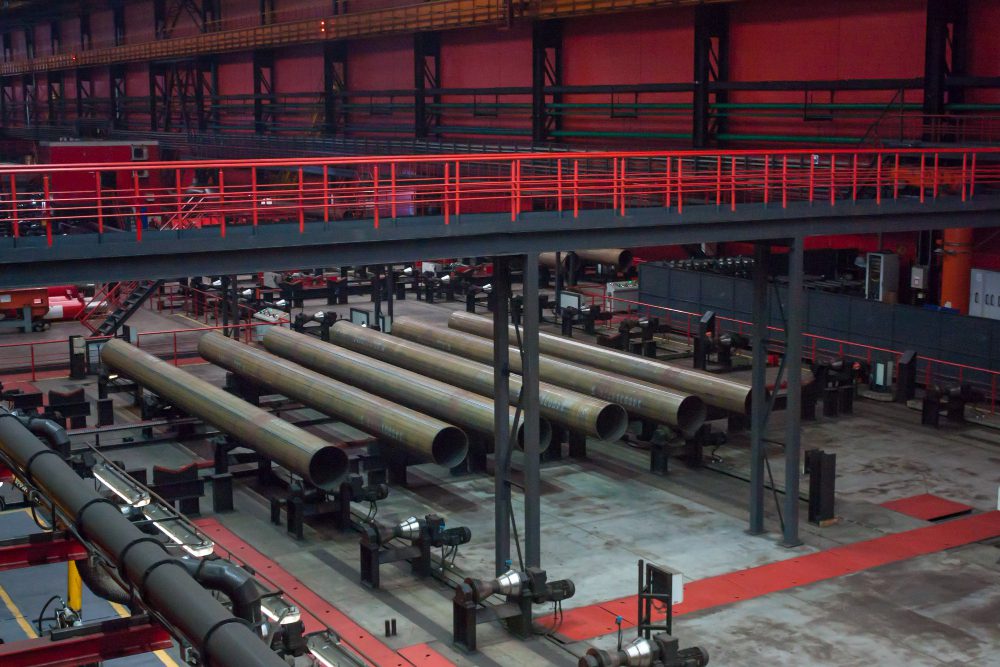
Various factors like material, size, condition, and market demand determine the value of salvaged pipes. Understanding these criteria can help you maximize your profit from selling salvaged pipes. Let’s learn about the key aspects influencing pipe valuation and uncover the best approaches to selling them. Additionally, let’s find out about some potential buyers of the salvaged pipes, including industrial pipe suppliers.
Methods to Assess Pipeline Value
- Pipeline value is often determined using the net operating income multiplied by the pipeline’s estimated lifespan. Another approach, the “Replacement Cost New” process, involves calculating the cost of replacing the existing pipeline with a new one, adjusting for depreciation based on the current pipeline’s age. This accounts for construction & acquisition costs.
- In some cases, factors like high demand or limited availability might cause the easement or right of way where the pipeline is located to become more valuable than the aging pipeline itself. Understanding these valuation methods can be crucial for industrial pipe suppliers and other stakeholders in the pipeline industry.
Factors Influencing Salvaged Pipe Value and Sales
- Salvage value is not fixed and depends on market conditions. Steel prices, especially scrap prices, play a significant role. Used steel pipe in good condition can sometimes fetch up to 70% of the price of new pipe, typically when sold directly to an end user.
- Numerous intermediaries exist between the initial salvager and the end user. These intermediaries handle tasks like transportation, cleaning, hauling, cutting, loading, beveling, straightening, grading, and reselling the pipe, often in bulk. Each stage adds value, but also cost, influencing the final price. Industrial pipe suppliers often operate within this supply chain.
- Pipeline salvagers often sell entire lines to distributors who break bulk and resell in truckloads, eventually reaching those who sell individual pieces. Each stage caters to different buyers, each with unique needs and price points, reflecting the structure of the steel industry.
- Fundamentally, salvaged pipe is a steel commodity. The objective is to sell as high in the supply chain as possible to maximize profit. While direct sales to end users command a premium price, most sellers target industrial pipe suppliers and similar intermediaries, striking a balance between profit and the complexities of retail sales.
Understanding the Value of Salvaged Pipelines
- Many salvaged pipelines are sold by weight. A significant portion of early U.S. pipelines, primarily used for oil transport, were constructed using a lap weld method. This involved rolling a steel sheet into a tube and welding the overlapping edges together.
- These pipelines typically had a consistent wall thickness and were called “standard walls.” While often sold by weight, these pipes can also be valuable to industrial pipe suppliers due to their unique construction and potential reuse applications.
- Scrap prices serve as the baseline for salvaged pipe value. This is because the pipe can always be sold as scrap metal, ensuring a minimum return. The price of new pipe from the mill sets the upper limit, representing the highest possible value if the salvaged pipe were in new condition.
- The actual value of salvaged pipe typically falls somewhere between these two extremes, influenced by factors like condition, demand, and market fluctuations. Industrial pipe suppliers play a key role in assessing and negotiating prices within this range.
- The value of salvaged pipe for structural reuse lies between the scrap price and the cost of the new pipe. However, various value-added processes can significantly increase its worth. Wholesalers and fabricators might cut, bevel, or modify the pipe to meet specific project requirements.
- Industrial pipe suppliers offer customized lengths and finishes, catering to diverse applications like piling, fencing, railings, and even livestock equipment. These customized products command a premium price compared to scrap, highlighting the potential profitability of salvaged pipes beyond their basic material value.
Considerations for Salvaged Pipe Value By Industrial Pipe Suppliers
- To accurately assess the net value of salvaged pipe, industrial pipe suppliers consider various costs associated with its removal and preparation for resale. These expenses include the initial purchase price, excavation and hauling fees, compensation to landowners, potential crop damage payments, and administrative overhead. Suppliers can ensure a realistic valuation and profitable resale by factoring in these costs.
- Additional costs play a crucial role in determining the net value of salvaged steel pipes. The approximate expenses typically include over $0.35 per foot for purchasing the pipe from the owner, $1.90 per foot for excavation, $0.15 per foot for hauling, and $0.20 per foot for compensating landowners. These figures can vary depending on factors like location, accessibility, and negotiation. Understanding and accurately calculating these costs is essential for industrial pipe suppliers to make informed decisions about purchasing and reselling salvaged pipe.
- While scrap prices provide a minimum value for salvaged pipe, aiming higher requires considering the various costs involved in removal and processing. These expenses can significantly impact profitability, potentially leaving little margin above scrap value. It’s crucial to note that improper handling during removal can damage the steel pipe, reducing its value to mere scrap metal.
- Industrial pipe suppliers use a simplified formula to estimate the net value of salvaged pipe- subtract removal and cleaning costs from the expected selling price, multiply by the pipeline length, and deduct a percentage for losses and damaged pipe. This provides a quick approximation, helping suppliers gauge potential profits before committing to a purchase.
Considering Transportation Costs
Transportation is a significant factor influencing the overall cost of salvaged steel pipes. Industrial pipe suppliers must factor in trucking expenses to transport the pipe to processing facilities. While rates can fluctuate, they typically fall within a certain range per loaded mile.
Evaluating Salvaged Pipeline Conditions
Thorough due diligence is crucial for industrial pipe suppliers to assess potential risks and costs associated with salvaged pipeline removal. This involves surveying the entire pipeline route for obstacles like bodies of water, crops, or environmental concerns. Additionally, verifying the pipe’s presence, depth, size, and condition through digging is essential. A qualified inspector should assess the pipe’s coating, which can significantly impact removal and disposal costs.
Analyzing Pipe Quality
Verifying the steel composition of salvaged pipe is crucial for assessing its integrity. Reputable industrial pipe suppliers can determine this by conducting lab tests on a pipe section and evaluating yield and burst strength, tensile strength, and hardness. Further metallurgical analysis can reveal the specific chemical elements present in the steel, providing a comprehensive understanding of the pipe’s quality and suitability for reuse.
Get Maximum Value for Your Salvaged Pipes with Bison Pipe
Are you ready to maximize your profits from salvaged steel pipe sales? Bison Pipe, one of the leading & trusted industrial pipe suppliers, is here to help. Our expertise in pipeline valuation and deep industry knowledge ensure you get the best possible price for your salvaged steel pipes. Contact us today to discuss your needs and know how we can transform your salvaged pipes into valuable assets.

